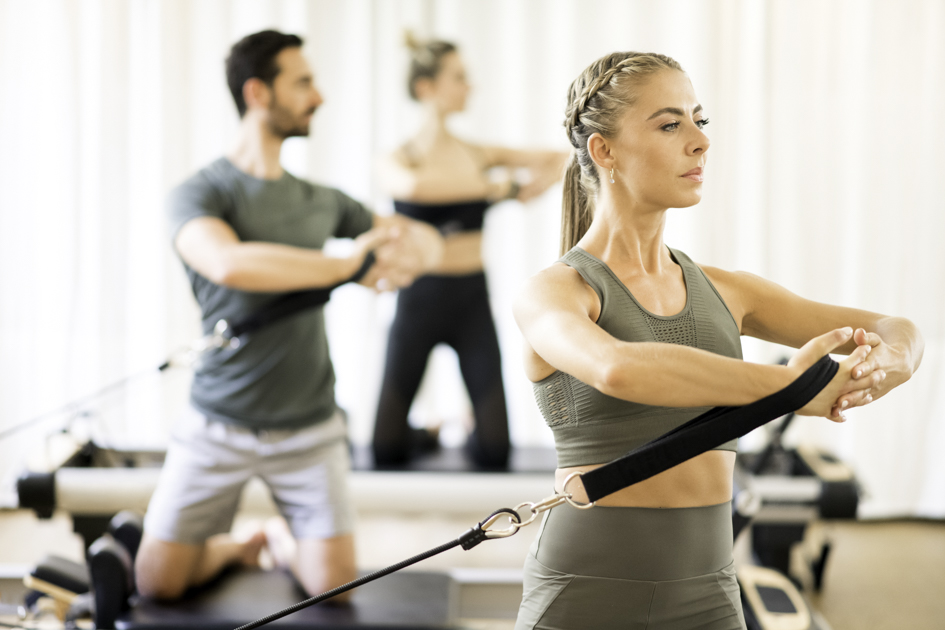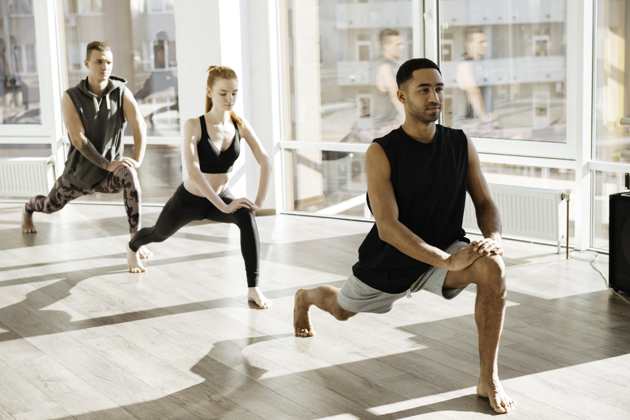7 Pilates Myths & Misconceptions to Debunk for Your Students

Misconceptions about Pilates are everywhere. And it’s up to you, as a Pilates studio owner, to educate people and help them separate fact from fiction!
New students who come to your facility may have certain preconceived notions about this form of exercise, so it’s time to set the record straight. The last thing you want is for a student to be intimidated by your classes because of certain Pilates misconceptions. Not only could this affect new students, but it could affect your business as well. Potential clients who may have heard about your studio might have stopped themselves from trying out a class because of a common Pilates myth!
It’s time to take control and debunk these fallacies once and for all!
Pilates Myths and Misconceptions
We’ve compiled a list of the seven most common Pilates myths and misconceptions out there. It’s time to shed some light on this incredible workout and boost your business.
1. Pilates is just like yoga
A prevalent Pilates myth is that it’s exactly like yoga. Though the two forms of exercise share many similarities, they are worlds apart!
Yoga and Pilates have certain elements in common. For instance, both involve stretching and a focus on the breath. They’re also both practiced on a mat and work on the body’s sense of flexibility.
Despite these similarities however, the essence of each practice is very different. Yoga specializes in connecting with the spirit, using movement to tap into flow and Universal energy. With the primary focus being on the breath, yoga can be thought of as movement meditation. On the physical side, yoga can help improve balance and flexibility.
On the other hand, for Pilates the focus is more on relaxing and strengthening the muscles. This practice is especially beneficial for the treatment and prevention of sports injuries, posture, and core.
By helping your students understand the differences between these two workouts, they’ll have a better idea of which is better suited to their needs.
2. Pilates is just a stretching class
Another common Pilates misconception is that it only involves stretching. This is far from the truth!
Pilates is so much more than just a stretching class! As a studio owner, this Pilates myth may be one that’s extremely disheartening to hear from students. Yes, stretches are involved during the workout, but you also need a great sense of control and focus to truly benefit from the class. Your entire body is in full motion and the lengthening movements are done to help you build core strength. Pilates uses your body’s own resistance and weight to carry out controlled movements. Posture and balance are also extremely important when doing this workout.
Because so many different elements go into Pilates, it’s unfair to say that it’s just about stretching. Focusing and controlling different parts of the body while enhancing the mind-body connection are what it’s all about. Once your students begin to grasp this concept, they’ll be able to enjoy the workout on a deeper level.
3. Pilates is only for women

Although Pilates is popular with women, it doesn’t mean that this workout excludes men. This Pilates myth is simply not true! Let your community know that this is not a gender specific exercise and that all are welcome!
Many men enjoy this form of exercise, and Pilates has even been introduced into the training rooms of professional athletes and teams. For example Kobe Bryant and Lebron James are among many who practice Pilates. It’s a great way to build core strength and focus on the proper alignment of your body.
Just because it doesn’t involve heavy weights and copious amounts of sweating, doesn’t mean Pilates isn’t a good workout. And it definitely isn’t gendered.
4. Pilates is simple
Some students might walk into your studio thinking this is a simple workout because of what they may have heard. It’s your job to let them know that while it may look easy, it actually takes a lot of control and focus.
To the untrained eye, Pilates might look simple because movements are done slowly. Though this is true, the entire body is involved in every exercise. The slower the movement, the more control is involved, which strengthens your core and muscles. Fun fact: Joseph Pilates, the creator of this workout, originally wanted it to be named Contrology!
Pilates is also a form of exercise that can be modified according to a person’s abilities. This might also lead people to believe that it’s easy, because they’ve only seen it in its most basic form. Several gyms and studios offer classes at a beginner level, not giving people the opportunity to see the more challenging styles. To increase the level of difficulty, some workouts involve machines like the Reformer and Wunda chair.
Though these machines can make the exercise more intense, they’re not always necessary. Read on to learn why this Pilates myth is going in the trash!
5. Pilates requires special equipment
Many people believe that Pilates can’t be done without the use of intricate and complicated equipment. This is absolutely false!
While machines can be used to enhance the practice, all of the basic exercise moves can be done on a mat. Pilates uses your own body weight as resistance. Equipment that incorporates springs, pulleys, and bars can make for a more intense session but are not absolutely necessary. Don’t let your students be intimidated by these machines and stress the fact that they’re only used in specific types of Pilates classes.

This Pilates myth has been debunked! Let’s move on to the next one.
6. Pilates only enhances your abdominal muscles
There are several benefits to taking a Pilates classes. Strengthening your core is just the tip of the iceberg, so educate your clients on the incredible advantages this workout offers!
Like we said before, Pilates helps to strengthen the mind body connection in addition to the abdominal muscles. Focusing on different aspects and parts of the body teaches students how to be aware of their alignment and physical form. This sense of focus also boosts their ability to concentrate. Plus, the full breaths required during the exercises teaches proper breathing techniques that are useful in other situations too!
Let your clients know that not only will they gain a stronger core, but they’ll enhance other valuable skills as well!
7. Pilates requires flexibility
Our final Pilates myth is that you need to be extremely flexible to partake in this exercise. It actually may come as a surprise to your students that if they’re not flexible, Pilates may be just the thing they need!
In fact, Pilates enhances flexibility! Through the elongated movements and stretches incorporated into the workout, the body is pushed to places that students may not believe possible. Because our bodies are 75% water, it’s able to adjust and respond to the exercises with regular training. The more you do it, the more flexible and lithe your body will become.
Like a graceful dancer, these elongated movements will help the body naturally flow and become more fluid. So, don’t let your students feel intimidated if they feel they aren’t flexible enough. Encourage them to do what feels most comfortable for them by introducing modifications into the practice and assure them that their bodies will eventually get there!
All in All…
The various misconceptions about Pilates can prevent clients from considering your studio. Enhance your business and grow your clientele by educating people about this beautiful practice.
WellnessLiving would love to help you accomplish all your business goals with the help of our exclusive software. Through our automated marketing, client retention programs, and much more, we can take your studio to new heights!
Ready to in-core-porate WellnessLiving into your business?
Sign up for a free, no-commitment demo and learn why business owners love our all-in-one business management software!






